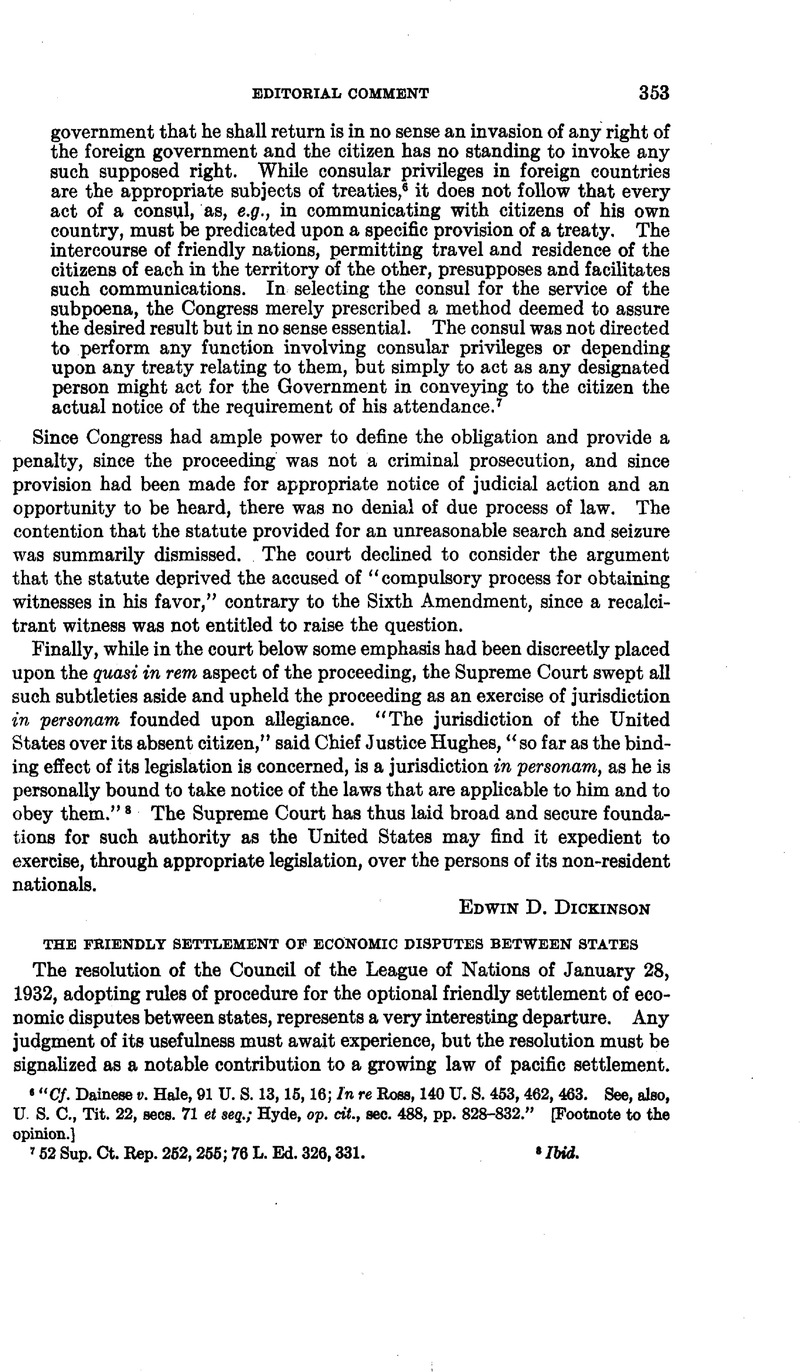No CrossRef data available.
Published online by Cambridge University Press: 12 April 2017

1 For the text of this protocol, see League of Nations Official Journal, 1930, p. 417. A resolution of the Tenth Assembly of the League of Nations had envisaged such a program.
2 “Memorandum relating to the Pacific Settlement of International Disputes Concerning Economic Questions in General and Commercial and Customs Questions in Particular.” Published as booklet, E. 666.
3 Order of December 6,1930, Publications of the Court, Series A, No. 24.
4 League of Nations Document, C. 57. M. 32. 1932. II. B.
a This means that only Governments can apply, and not individuals.
b The Experts are given the widest jurisdiction, as their consultation is optional.
c The Economic Committee experienced some difficulty in deciding the number of Experts.
d The last provision of Article 10 naturally does not exclude the right of the Parties to have themselves represented by agents instructed to defend their interests.
e In principle, the Economic Committee favours the publications of such results, but the results can only be published when the parties agree, because, if publication were compulsory in every instance Governments might hesitate to resort to the proposed procedure.
f This rule is intended to ensure that the League shall not incur expenditure for which no provision has been made in its budget, and which ought, after all, to be borne by the Parties. It also ensures that there shall be no delay in the procedure.
5 Published by the International Chamber of Commerce, Paris, Jan. 1,1920; amended at Washington in 1931. See International Chamber of Commerce, Brochure No. 77, p. 28.
6 “Services rendered by the Arbitration system of the International Chamber of Commerce.” International Chamber of Commerce, Washington Congress, 1931, No. 18.
7 For the text see 2 Hudson, International Legislation, p. 1062.
8 For the text, see 3 Hudson, International Legislation, p. 2153.